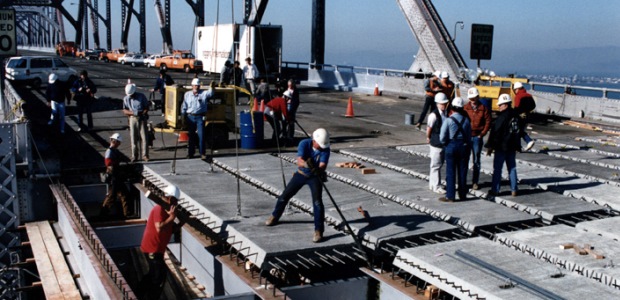
Workers' Memorial Day 2014: Chemicals, New Hazards, Falls
Safety agencies around the world observe this day, April 28, to encourage workers and employers to do all they can to be safer on the job.
U.S. Secretary of Labor Thomas Perez will join in a webcast at 2 p.m. EDT today, April 28, to mark Workers' Memorial Day. Safety agencies worldwide will do the same -- NIOSH, OSHA, IOSH, and many more.
The Washington State Department of Labor & Industries hosts its Worker Memorial Day ceremony on April 29 this year, honoring workers who died in the previous year from job-related injuries or illnesses. Families of the fallen workers are invited to attend the service, in which the names of the workers who have died are read aloud.
AIHA President Barbara J. Dawson, CIH, CSP, issued a statement saying that AIHA observes Workers' Memorial Day "to remember workers who have suffered and died due to unhealthy or unsafe workplaces, and to renew our efforts to eliminate workplace hazards and maintain safe and healthy working environments. Since Congress passed the Occupational Safety and Health Act more than four decades ago, we've made great strides in making workplaces safer and healthier. Over the past year, the U.S. Department of Labor's Occupational Safety and Health Administration has moved forward with much-needed safeguards against occupational exposures to respirable crystalline silica, released annotated tables of its permissible exposure limits to encourage employers to adopt alternative occupational exposure limits that may better protect workers, and developed educational resources on safe patient handling and other workplace hazards. However, our efforts to improve occupational health and safety will not be complete until all workers are able to return home safe and healthy at the end of each day."
ILO, the International Labour Organization, is focusing its April 28 message -- the 2014 World Day for Safety and Health at Work, according to ILO -- on the safe use of chemicals. GHS is an international scheme for increasing workers' knowledge about chemical exposures, and OSHA has harmonized its HazCom standard to it. ILO admits as much: "Significant progress has been made concerning the regulation and management of chemicals in the field of occupational safety and health, but more needs to be done. Serious incidents continue to happen and there are still negative impacts on both human health and the environment," its April 28 message states.
The April 28 message from Dr. John Howard, NIOSH's director -– a true leader of the safety industry –- is worth reading:
"Workers Memorial Day, April 28, reminds us that every death, injury, or illness on the job represents a human tragedy. Behind each statistic is the loss of a loved one's life, the diminution or loss of a father's or mother's ability to provide for family needs, or a medical crisis that can have lifelong consequences.
"Workers Memorial Day has been observed in the U.S. since 1989. In those 25 years, which span the end of one century and the beginning of another, many things have changed in our society. New generations of men and women have entered the workforce. New industries have emerged. New technologies and demographic trends have transformed the economy.
"As we look at the changing landscape, two challenges emerge. While the nation has done much since 1989 to reduce the toll of occupational hazards, much more remains to be accomplished. Some hazards that have existed since the dawn of human industry still claim lives and livelihoods. In this regard, the National Institute for Occupational Safety and Health (NIOSH) is proud to join again this year with our numerous partners in the public and private sectors in our joint national campaign to end fall hazards. At the same time, we are employing 21st Century technologies as new tools to drive innovative preventive measures, such as our new mobile app for ladder safety. http://www.cdc.gov/niosh/topics/falls/.
"In other cases, today's changing landscape presents new concerns that were undreamed-of 25 years ago. Relatively unknown in 1989, nanotechnology today drives an industry that accounted for $251 billion across the global economy in 2009, and is projected to grow to $2.4 trillion by 2015. NIOSH and its partners support the safe growth of this technology through state-of-the-art science to assess the risks of work-related exposures to novel, nano-sized materials and to apply practical, effective health and safety measures. http://www.cdc.gov/niosh/topics/nanotech/. Our partnerships serve as a model for a modern paradigm of designing worker safety and health into new technologies and industries at early stages.
"Similarly, our partnerships in Total Worker HealthTM reflect a strategy based on the realities of today's economy, where working life and private life are closely linked for many of us. By combining worker health protection and work-based health promotion, we can better help working people stay safe, healthy, able, and active in the course of a lifetime. http://www.cdc.gov/NIOSH/twh/
"Threats of large-scale disaster – whether of natural or human origin – demand that occupational safety and health professionals build on and adapt our historic skills to safeguard emergency responders in dangerous, unpredictable environments. The emerging discipline of disaster science research will inform new, evidence-based protocols for keeping responders safe in rescue, recovery, and rebuilding operations. http://www.cdc.gov/niosh/disasterscience/
"As we reflect on the many ways in which our lives have changed since the first Workers Memorial Day, we must remember that our duty to prevent work-related injury, illness, and death remains unchanged. It continues to demand our best efforts to make every workplace safe for every working person, every working hour."